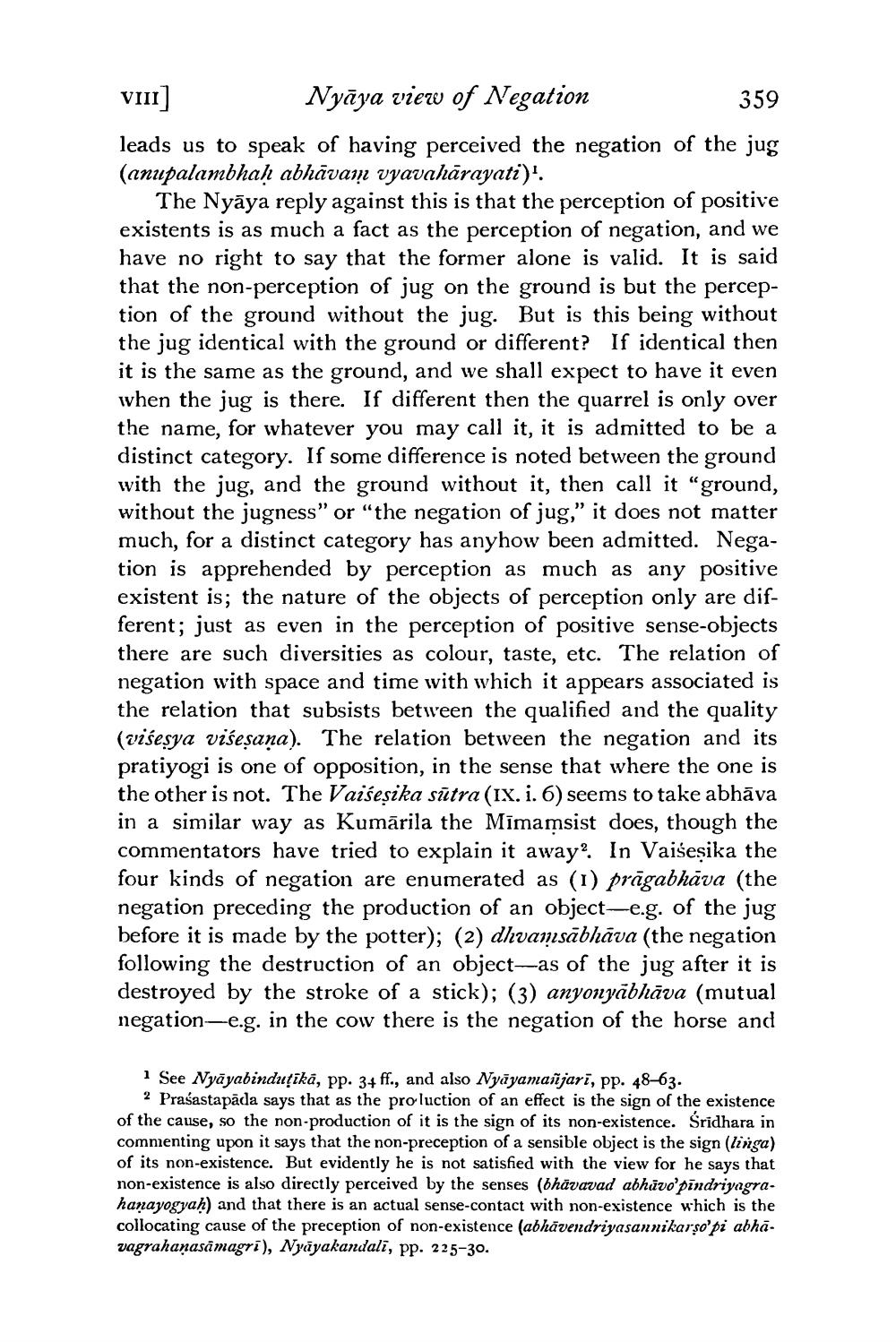________________
VIII] Nyāya view of Negation
359 leads us to speak of having perceived the negation of the jug (anupalambhaḥ abhāvaiņ vyavahārayati)'.
The Nyāya reply against this is that the perception of positive existents is as much a fact as the perception of negation, and we have no right to say that the former alone is valid. It is said that the non-perception of jug on the ground is but the perception of the ground without the jug. But is this being without the jug identical with the ground or different? If identical then it is the same as the ground, and we shall expect to have it even when the jug is there. If different then the quarrel is only over the name, for whatever you may call it, it is admitted to be a distinct category. If some difference is noted between the ground with the jug, and the ground without it, then call it "ground, without the jugness" or "the negation of jug," it does not matter much, for a distinct category has anyhow been admitted. Negation is apprehended by perception as much as any positive existent is; the nature of the objects of perception only are different; just as even in the perception of positive sense-objects there are such diversities as colour, taste, etc. The relation of negation with space and time with which it appears associated is the relation that subsists between the qualified and the quality (višesya višesana). The relation between the negation and its pratiyogi is one of opposition, in the sense that where the one is the other is not. The Vaisesika sūtra (IX. i. 6) seems to take abhāva in a similar way as Kumārila the Mīmamsist does, though the commentators have tried to explain it away? In Vaisesika the four kinds of negation are enumerated as (1) prāgabhāva (the negation preceding the production of an object-e.g. of the jug before it is made by the potter); (2) dhvamsābhāva (the negation following the destruction of an object-as of the jug after it is destroyed by the stroke of a stick); (3) anyonyābhāva (mutual negation-e.g. in the cow there is the negation of the horse and
i See Nyāyabinduţikä, pp. 34 ff., and also Nyāyanasjari, pp. 48-63.
2 Prasastapāda says that as the pro-luction of an effect is the sign of the existence of the cause, so the non-production of it is the sign of its non-existence. Śridhara in commenting upon it says that the non-preception of a sensible object is the sign (linga) of its non-existence. But evidently he is not satisfied with the view for he says that non-existence is also directly perceived by the senses (bhävavad abhāvo'pindriyagrahanayogyaḥ) and that there is an actual sense-contact with non-existence which is the collocating cause of the preception of non-existence (abhāvendriyasannikarşo'pi abhavagrahanasāmagri), Nyāyakandali, pp. 225-30.




